Related Research Articles

Yarra Trams is the trading name of the operator of the tram network in Melbourne, Australia, which is owned by VicTrack and leased to Yarra Trams by the Victorian Department of Transport and Planning. The current franchise is operated by Keolis Downer. As at May 2014, Yarra Trams operate 487 trams, across 26 tram routes and a free City Circle tourist tram, over 1,763 tram stops. With 250 km (155.3 mi) of double track, Melbourne's tram network is the largest in the world.
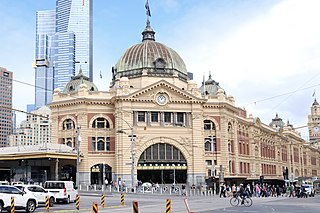
The Melbourne rail network is a metropolitan suburban and freight rail system serving the city of Melbourne, Victoria, Australia. The metropolitan rail network is centred around the Melbourne central business district (CBD) and consists of 222 railway stations across 16 lines, which served a patronage of 99.5 million over the year 2021–2022. It is the core of the larger Victorian railway network, with regional links to both intrastate and interstate rail systems.
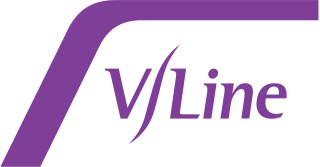
V/Line is a statutory authority that operates regional passenger train and coach services in the Australian state of Victoria. It provides passenger train services on five commuter lines and eight long-distance routes from its major hub at Southern Cross railway station in Melbourne. It also provides bus services across Victoria and into New South Wales, the Australian Capital Territory and South Australia. In addition, V/Line is responsible for the maintenance of much of the Victorian freight and passenger rail network outside of the areas managed by Metro Trains Melbourne and the Australian Rail Track Corporation.
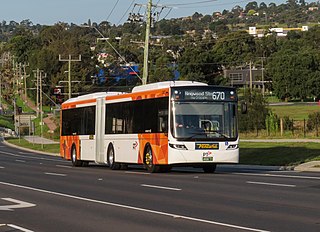
Buses in Melbourne, Australia, are a major form of public transport in Melbourne, with an extensive bus network. There are 346 routes in operation with a varying range of service frequencies, operated by privately owned bus companies under franchise from the State Government. The Night Network bus system consists of 10 routes and operates on Friday and Saturday nights, and a SmartBus orbital bus network currently consisting of nine routes, which is intended to facilitate cross city travel, while the current network is predominantly a radial network. Most of the bus network is a covered by the myki ticketing system.
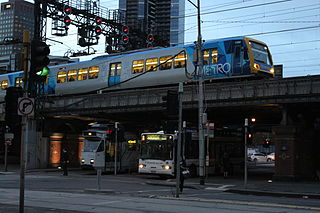
Transport in Melbourne, the state capital of Victoria, Australia, consists of several interlinking modes. Melbourne is a hub for intercity, intracity and regional travel. Road-based transport accounts for most trips across many parts of the city, facilitated by Australia's largest freeway network. Public transport, including the world's largest tram network, trains and buses, also forms a key part of the transport system. Other dominant modes include walking, cycling and commercial-passenger vehicle services such as taxis.
VicRoads is a government joint venture in the state of Victoria, Australia. In the state, it is responsible for driver licensing and vehicle registration. It is owned and operated through a joint venture between the Victorian government and a consortium made up of Aware Super, Australian Retirement Trust and Macquarie Asset Management.
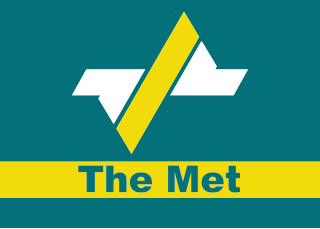
The Public Transport Corporation (PTC) was a Victoria State Government owned statutory authority formed under the Transport Act 1983 which operated passenger and freight trains, trams and bus services.

The Metropolitan Transit Authority (MTA), known to the general public as The Met, was a Government of Victoria owned corporate body that operated suburban passenger trains, trams and buses in Victoria, Australia. It was set up under Section 15 of the Transport Act 1983 and commenced operation on 1 July 1983. It was a statutory body set up to manage the trams formerly operated by the Melbourne & Metropolitan Tramways Board, the metropolitan train operations of the former VicRail, and the operations of the former Melbourne Underground Rail Loop Authority.

VicTrack, trading as the Victorian Rail Track Corporation, is a Victorian Government state-owned enterprise which owns all railway and tram lines, associated rail lands and other rail-related infrastructure in the state of Victoria, Australia, with the exception of the Emerald Tourist Railway Board's heritage Puffing Billy Railway.
Transport law is the area of law dealing with transport. The laws can apply very broadly at a transport system level or more narrowly to transport things or activities within that system such as vehicles, things and behaviours. Transport law is generally found in two main areas:

The Transport Integration Act 2010 is a law enacted by the Parliament of the State of Victoria, Australia. The Act is the prime transport statute in Victoria, having replaced major parts of the Transport Act 1983, which was renamed as the Transport Act 1983.

The Department of Transport (DOT) was the government agency responsible for the coordination, integration and regulation of the transport system in the State of Victoria, Australia. The department generated planning, policy, and legislation for transport in Victoria. As a result, the department drove the integration of Victoria's transport land and water transport systems and the delivery of public transport, road and port services and associated activities across the State. The department's stated mission was "Building a safer, fairer and greener transport system for all Victorians to create a more prosperous and connected community."

The Director of Public Transport was the head of the Public Transport Division (PTD) of the Victorian Department of Transport. PTD was the government agency responsible for promoting, providing, coordinating and regulating public transport in the state of Victoria, Australia between August 1999 and June 2013. The Director of Public Transport was created as a statutory office supported by staff of the Department of Transport.
The Chief Investigator, Transport Safety is the independent Government agency responsible for investigation of safety-related trends and incidents in the rail, bus and marine industries in the State of Victoria, Australia.
Public Transport Victoria (PTV) is the brand name for public transport in the Australian state of Victoria. It was previously the trading name of the Public Transport Development Authority (PTDA), a now-defunct statutory authority in Victoria, responsible for providing, coordinating, and promoting public transport.
The Transport Act 1983 was the main statute establishing government transport organisations and regulating land transport activities in the State of Victoria, Australia for 27 years from mid-1983 to mid-2010. The act was used as the vehicle for changes to transport organisational arrangements and transport regulation activities pursued by Victorian governments over that period.

The Network Development Plan – Metropolitan Rail was a long-term development plan for the rail network of Melbourne, Australia. It was written by Public Transport Victoria (PTV) and released to the public on 27 March 2013 under the Napthine government and received minor updates in 2016.
The Department of Transport and Planning (DTP) is a government department in Victoria, Australia. Commencing operation on 1 January 2019 as the Department of Transport (DOT), the DOT was formed in machinery of government changes made by Premier Daniel Andrews after the re-election of his Labor government at the 2018 Victorian state election. The re-shuffle saw the "super-ministry" Department of Economic Development, Jobs, Transport and Resources abolished and its functions reassigned to the DOT and Department of Jobs, Precincts and Regions.
The Ministry of Transport, later known as the Department of Transport, was a statutory ministry that acted as the chief transport agency of the Government of Victoria between 1958 and 1996. Originally established by the Transport Act 1951 and strengthened by the Transport Act 1983, the Ministry took on a variety of roles, coordinating the state's other transport operations and reporting to a number of Ministers throughout its history.
References
- ↑ "New one-stop shop for Vic roads, transport". News.com.au. 27 June 2016. Retrieved 28 June 2016.
- 1 2 "A Simpler, More Coordinated Transport System For Victoria". State Government of Victoria. 27 June 2016. Retrieved 28 June 2016.
- 1 2 "Victorian government announces consolidated transport agency". Railway Digest . August 2016. p. 22.
- ↑ Pollock, Michael (27 June 2016). "New body to co-ordinate VicRoads, PTV". The Courier. Retrieved 7 December 2017.
- ↑ Carey, Adam (14 December 2016). "Like dominoes, one part of train system falls over and everything collapses". The Age . Retrieved 7 December 2017.
- ↑ "Governance". Department of Transport. Archived from the original on 18 February 2020. Retrieved 17 February 2020.
 Material was copied from this source, which is available under a Creative Commons Attribution 4.0 International License.
Material was copied from this source, which is available under a Creative Commons Attribution 4.0 International License.